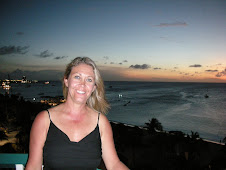 The trip included a stay at an amazing boutique hotel, which just happened to be located at a tequila distillery, La Cofradia.
The trip included a stay at an amazing boutique hotel, which just happened to be located at a tequila distillery, La Cofradia.EXCERPT: Tequila — the liquor, not the town — has picked up a bit of a bad rap even as it’s grown increasingly popular throughout North America, Europe, and beyond. As in, margaritas and shooters, a cheap and surefire way to get — how can I put this — majorly wasted.
And yet…ever more folks are coming to appreciate the spirit’s finer points — there are reposados the equal of any single malt or Cognac, and a lore nearly as varied and distinguished as either. It was this pedigree — plus a taste of the lesser-known color of colonial Mexico — that I was seeking when I set out for this legendary central Mexican town.
This singular liquor is distilled from the cactuslike agave plant, and an officially designated “Tequila Route” passes through various villages that live for agave (including homemade brew in mini-barrels lining shopkeepers’ shelves; sample at your own risk). But it’s in and around Santiago de Tequila (pop. 27,000) on scenic Carretera15 less than an hour from Guadalajara, that you’ll find more than half of Mexico’s 90,000 acres of blue agave cultivation.
And yet…ever more folks are coming to appreciate the spirit’s finer points — there are reposados the equal of any single malt or Cognac, and a lore nearly as varied and distinguished as either. It was this pedigree — plus a taste of the lesser-known color of colonial Mexico — that I was seeking when I set out for this legendary central Mexican town.
This singular liquor is distilled from the cactuslike agave plant, and an officially designated “Tequila Route” passes through various villages that live for agave (including homemade brew in mini-barrels lining shopkeepers’ shelves; sample at your own risk). But it’s in and around Santiago de Tequila (pop. 27,000) on scenic Carretera15 less than an hour from Guadalajara, that you’ll find more than half of Mexico’s 90,000 acres of blue agave cultivation.
Tequila and neighboring communities like Amatitán and Arenal are this country’s heart — and definitely not tarted up for gringos. This is unvarnished countryside where weathered jimadores (agave farmers) hit the fields before sunrise to beat the worst of the sun’s heat and the dark shadow of the Volcán Tequila hugs hilltops covered with acres of spiky blue agave — an industry that all began when the Spanish conquistadors invented “tequila wine” within a few decades of their arrival.
Read more here abt my great trip to Tequila at Tripatini.com
Until next time, Diana Rowe







No comments:
Post a Comment